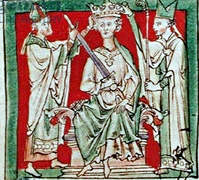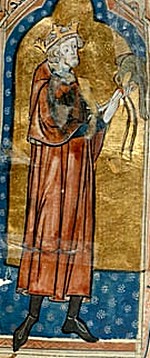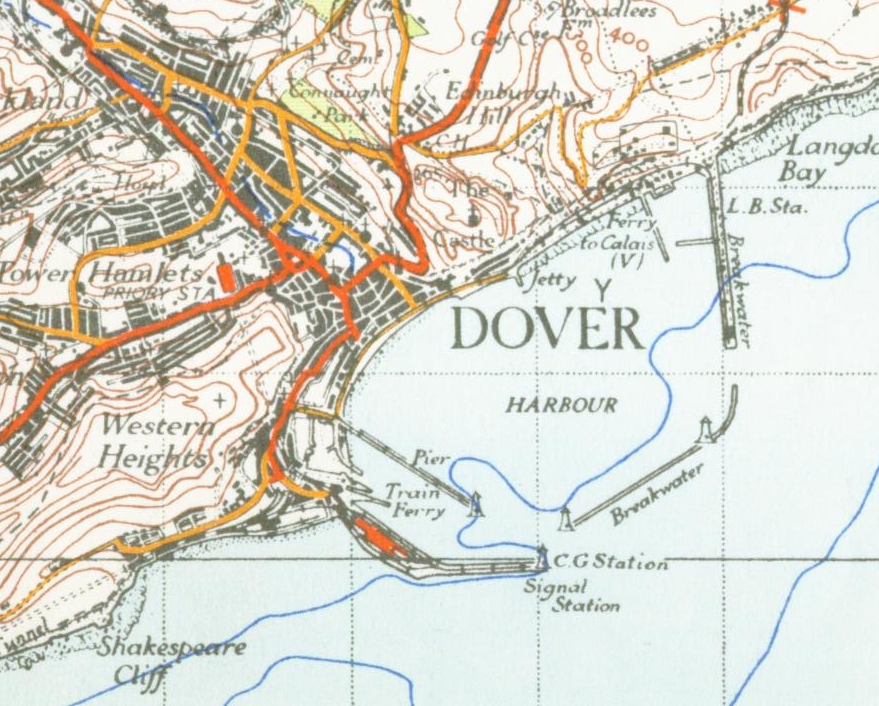|
Rout Of Winchester
In the Rout of Winchester (14 September 1141) the army of imprisoned King Stephen of England, led by his wife, Queen Matilda of Boulogne, Stephen's brother Bishop Henry of Blois, and William of Ypres, faced the army of Stephen's cousin Empress Matilda, whose forces were commanded by her half-brother Earl Robert of Gloucester. After Empress Matilda's army besieged a castle on the edge of Winchester, Queen Matilda's army arrived and blockaded the Angevin army within the city. Cut off from supplies, the Angevin army gave up the siege, then was crushed as it began to retreat. Robert of Gloucester was captured and was subsequently exchanged for Stephen, who was returned to the throne of England. However, the civil war known as The Anarchy dragged on with neither side gaining an advantage. Background Stephen usurps the throne When William Adelin drowned in the '' White Ship'', King Henry I of England was left with no male heirs. A second marriage to 18-year-old Adeliza of Louvain ... [...More Info...] [...Related Items...] OR: [Wikipedia] [Google] [Baidu] |
The Anarchy
The Anarchy was a civil war in England and Duchy of Normandy, Normandy between 1138 and 1153, which resulted in a widespread breakdown in law and order. The conflict was a war of succession precipitated by the accidental death of William Adelin (the only legitimate son of Henry I of England, Henry I), who drowned in the White Ship disaster, ''White Ship'' disaster of 1120. Henry sought to be succeeded by his daughter, known as Empress Matilda, but was only partially successful in convincing the nobility to support her. On Henry's death in 1135, his nephew Stephen of Blois seized the throne with the help of Stephen's brother Henry of Blois, who was the bishop of Winchester. He was crowned as Stephen, King of England, King Stephen, and his early reign saw fierce fighting with disloyal English barons, rebellious Welsh leaders, and Scottish invaders. Following a major rebellion in the southwest of England, Matilda invaded in 1139 with the help of her half-brother Robert, 1st Earl o ... [...More Info...] [...Related Items...] OR: [Wikipedia] [Google] [Baidu] |
Adela Of Normandy
Adela of Normandy, of Blois, or of England (c. 1067 – 8 March 1137),LoPrete, Kimberly. "Adela of Blois". ''Women and Gender in Medieval Europe: An Encyclopedia''. Ed. Margaret Schaus. New York: Routledge, 2006. 6–7. also known as in the Catholic Church, was a daughter of William the Conqueror and Matilda of Flanders. She later became the countess of Blois, Chartres, and Meaux by marriage to Stephen II of Blois. Her husband greatly benefited from the increased social status and prestige that came with a marriage into such a wealthy and powerful family. She was regent of Blois during the absence of her spouse in 1096–1100 and 1101–02, and during the minority of her son from 1102 until 1120. Her marriage also laid the groundwork for a period of extended strife in the Anglo Norman lands. Adela was the mother of King Stephen of England whose taking of the throne in preference to her niece Empress Matilda led to the civil war known as The Anarchy. Early life It is gen ... [...More Info...] [...Related Items...] OR: [Wikipedia] [Google] [Baidu] |
Portsmouth
Portsmouth ( ) is a port city status in the United Kingdom, city and unitary authority in Hampshire, England. Most of Portsmouth is located on Portsea Island, off the south coast of England in the Solent, making Portsmouth the only city in England not located primarily on the Great Britain, mainland. The city is located south-east of Southampton, west of Brighton and Hove and south-west of London. With a population last recorded at 208,100, it is the most densely populated city in the United Kingdom. Portsmouth forms part of the South Hampshire urban area with Gosport, Borough of Fareham, Fareham, Borough of Havant, Havant, Borough of Eastleigh, Eastleigh and Southampton. Portsmouth's history can be traced to Roman Britain, Roman times and has been a significant Royal Navy dockyard and base for centuries. Portsmouth was founded by Anglo-Norman merchant Jean de Gisors in the south-west area of Portsea Island, a location now known as Old Portsmouth. Around this time, de Gis ... [...More Info...] [...Related Items...] OR: [Wikipedia] [Google] [Baidu] |
Battle Of The Standard
The Battle of the Standard, sometimes called the Battle of Northallerton, took place on 22 August 1138 on Cowton Moor near Northallerton in Yorkshire, England. English forces under William of Aumale repelled a Scottish army led by King David I of Scotland. King Stephen of England, fighting rebel barons in the south, had sent a small force (largely mercenaries), but the English army was mainly local militia and baronial retinues from Yorkshire and the north Midlands. Archbishop Thurstan of York had exerted himself greatly to raise the army, preaching that to withstand the Scots was to do God's work. The centre of the English position was therefore marked by a mast (mounted upon a cart) bearing a pyx carrying the consecrated host and from which were flown the consecrated banners of the minsters of York, Beverley and Ripon: hence the name of the battle. This cart-mounted standard was a very northerly example of a type of standard common in contemporary Italy, where it was kn ... [...More Info...] [...Related Items...] OR: [Wikipedia] [Google] [Baidu] |
David I Of Scotland
David I or Dauíd mac Maíl Choluim (Scottish Gaelic, Modern Gaelic: ''Daibhidh I mac [Mhaoil] Chaluim''; – 24 May 1153) was a 12th century ruler and saint who was David I as Prince of the Cumbrians, Prince of the Cumbrians from 1113 to 1124 and King of Scotland from 1124 to 1153. The youngest son of King Malcolm III and Saint Margaret of Scotland, Queen Margaret, David spent most of his childhood in Scotland but was exiled to Kingdom of England, England temporarily in 1093. Perhaps after 1100, he became a dependent at the court of King Henry I of England, by whom he was influenced. When David's brother Alexander I of Scotland, Alexander I died in 1124, David chose, with the backing of Henry I, to take the Kingdom of Alba (Scotland) for himself. He was forced to engage in warfare against his rival and nephew, Máel Coluim mac Alaxandair. Subduing the latter seems to have taken David ten years, a struggle that involved the destruction of Óengus of Moray, Óengus, Mormaer of ... [...More Info...] [...Related Items...] OR: [Wikipedia] [Google] [Baidu] |
County Of Anjou
The County of Anjou (, ; ; ) was a French county that was the predecessor to the Duchy of Anjou. Its capital was Angers, and its area was roughly co-extensive with the diocese of Angers. Anjou was bordered by Brittany to the west, Maine, France, Maine to the north, Touraine to the east and Poitou to the south. Its 12th century Count Geoffrey of Anjou, Geoffrey created the nucleus of what became the Angevin Empire. The adjectival form is Angevin (other), Angevin, and inhabitants of Anjou are known as Angevins. In 1360, the county was raised into the Duchy of Anjou within the Kingdom of France. This duchy was later absorbed into the French royal domain in 1482 and remained a province of the kingdom until 1790. Background Anjou's political origin is traced to the ancient Gallic tribe, Gallic state of the ''Andes''. After the Conquest of Gaul, conquest by Julius Caesar, the area was organized around the Roman ''civitas'' of the ''Andecavi''. History Frankish county The ... [...More Info...] [...Related Items...] OR: [Wikipedia] [Google] [Baidu] |
London
London is the Capital city, capital and List of urban areas in the United Kingdom, largest city of both England and the United Kingdom, with a population of in . London metropolitan area, Its wider metropolitan area is the largest in Western Europe, with a population of 14.9 million. London stands on the River Thames in southeast England, at the head of a tidal estuary down to the North Sea, and has been a major settlement for nearly 2,000 years. Its ancient core and financial centre, the City of London, was founded by the Roman Empire, Romans as Londinium and has retained its medieval boundaries. The City of Westminster, to the west of the City of London, has been the centuries-long host of Government of the United Kingdom, the national government and Parliament of the United Kingdom, parliament. London grew rapidly 19th-century London, in the 19th century, becoming the world's List of largest cities throughout history, largest city at the time. Since the 19th cen ... [...More Info...] [...Related Items...] OR: [Wikipedia] [Google] [Baidu] |
Dover
Dover ( ) is a town and major ferry port in Kent, southeast England. It faces France across the Strait of Dover, the narrowest part of the English Channel at from Cap Gris Nez in France. It lies southeast of Canterbury and east of Maidstone. The town is the administrative centre of the Dover District and home of the Port of Dover. Archaeological finds have revealed that the area has always been a focus for peoples entering and leaving Great Britain, Britain. The name derives from the River Dour that flows through it. In recent times the town has undergone transformations with a high-speed rail link to London, new retail in town with St James' area opened in 2018, and a revamped promenade and beachfront. This followed in 2019, with a new 500m Pier to the west of the Harbour, and new Marina unveiled as part of a £330m investment in the area. It has also been a point of destination for many English Channel migrant crossings (2018-present), illegal migrant crossings. The Port ... [...More Info...] [...Related Items...] OR: [Wikipedia] [Google] [Baidu] |
Wissant
Wissant (; from , "white sand") is a seaside commune in the Pas-de-Calais department in the Hauts-de-France region of France approximately north of Boulogne, west-southwest of Calais on the English Channel coast. History Located at the eastern end of a lagoon formed by a storm-breach of the coastal dunes, probably in the mid-10th century, Wissant has been a fishing village for a millennium: along with Audresselles it is the last fishing village in France to use a traditional method of fishing using a wooden boat called a '' flobart'' and was in the Middle Ages a major port for embarkation for England: In a mid-11th century ''Life of St. Vulganius'', Wissant was specified, probably anachronistically, as the natural disembarkation point for the early eighth-century Celtic saint in his evangelizing travels. Wissant was the embarkation port of Robert de Beaumont, 3rd Earl of Leicester, for his ill-fated invasion of England in 1173, with an army of 3000 Flemings. Henry III of E ... [...More Info...] [...Related Items...] OR: [Wikipedia] [Google] [Baidu] |
English Channel
The English Channel, also known as the Channel, is an arm of the Atlantic Ocean that separates Southern England from northern France. It links to the southern part of the North Sea by the Strait of Dover at its northeastern end. It is the busiest Sea lane, shipping area in the world. It is about long and varies in width from at its widest to at its narrowest in the Strait of Dover."English Channel". ''The Columbia Encyclopedia'', 2004. It is the smallest of the shallow seas around the continental shelf of Europe, covering an area of some . The Channel aided the United Kingdom in becoming a naval superpower, serving as a natural defence against invasions, such as in the Napoleonic Wars and in the World War II, Second World War. The northern, English coast of the Channel is more populous than the southern, French coast. The major languages spoken in this region are English language, English and French language, French. Names Roman historiography, Roman sources as (or , ... [...More Info...] [...Related Items...] OR: [Wikipedia] [Google] [Baidu] |
Duchy Of Normandy
The Duchy of Normandy grew out of the 911 Treaty of Saint-Clair-sur-Epte between Charles the Simple, King Charles III of West Francia and the Viking leader Rollo. The duchy was named for its inhabitants, the Normans. From 1066 until 1204, as a result of the Norman Conquest of England, the dukes of Normandy were usually also kings of England, the only exceptions being Dukes Robert Curthose (1087–1106), Geoffrey Plantagenet, Count of Anjou, Geoffrey Plantagenet (1144–1150), and Henry II of England, Henry II (1150–1152), who became king of England in 1154. In 1202, Philip II of France declared Normandy forfeit to him and Invasion of Normandy by Philip II of France, seized it by force of arms in 1204. It remained disputed territory until the Treaty of Paris (1259), Treaty of Paris of 1259, when the English sovereign ceded his claim except for the Channel Islands. With the mainland portions of the Duchy absorbed into the Royal domain of France, French Royal Domain, the now much ... [...More Info...] [...Related Items...] OR: [Wikipedia] [Google] [Baidu] |







